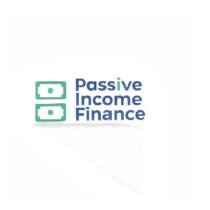Your Ultimate Financial Freedom Roadmap: Steps to Achieve Independence
Financial freedom is a goal that many aspire to achieve, yet few manage to attain. It is the state of having sufficient personal wealth to live without having to work actively for basic necessities. But how do you get there? This blog post will provide you with a comprehensive roadmap to financial freedom, outlining the essential steps you need to take to reach your financial goals.
Step 1: Define Your Financial Goals
The first step on your journey to financial freedom is to clearly define your financial goals. What does financial freedom mean to you? Is it retiring early, traveling the world, or simply having enough savings to cover emergencies? Write down your short-term and long-term goals, and be specific. The more precise you are, the easier it will be to create a plan to achieve them.
Step 2: Assess Your Current Financial Situation
Before you can create a roadmap, you need to understand where you currently stand financially. Take a comprehensive look at your income, expenses, debts, and assets. Create a balance sheet that lists your liabilities and assets to see your net worth. This assessment will serve as the foundation for your financial plan.
Step 3: Create a Budget
A budget is a crucial tool for managing your finances and achieving financial freedom. It helps you track your spending and ensures that you are living within your means. Start by categorizing your expenses into necessary and discretionary spending. Allocate a portion of your income to savings and investments. Regularly review and adjust your budget to reflect changes in your financial situation.
Step 4: Build an Emergency Fund
An emergency fund is a safety net that protects you from unexpected financial shocks, such as medical emergencies or job loss. Aim to save at least three to six months’ worth of living expenses in a separate, easily accessible account. This fund will provide you with peace of mind and allow you to focus on your long-term financial goals without the stress of potential financial setbacks.
Step 5: Pay Off Debt
Debt can be a significant barrier to financial freedom. Begin by tackling high-interest debts, such as credit cards, as these can quickly accumulate and hinder your progress. Consider strategies like the snowball method (paying off the smallest debts first) or the avalanche method (focusing on the highest interest rates). Once you are free from debt, you can redirect those funds toward saving and investing.
Step 6: Invest in Your Future
Investing is a fundamental component of building wealth. Start by contributing to retirement accounts, such as a 401(k) or an IRA, to take advantage of tax benefits and compound interest. Additionally, explore other investment options, such as stocks, bonds, or real estate. Diversification is key to managing risk, so consider a mix of investment vehicles that align with your risk tolerance and financial goals.
Step 7: Increase Your Income
While managing your expenses is important, increasing your income can accelerate your journey to financial freedom. Consider pursuing additional education or training to enhance your skills and job prospects. You might also explore side hustles or freelance opportunities that align with your passions and expertise. Every additional dollar you earn can be invested toward your financial goals.
Step 8: Continuously Educate Yourself
Financial literacy is essential for making informed decisions. Invest time in educating yourself about personal finance, investment strategies, and market trends. Read books, attend workshops, and follow reputable finance blogs and podcasts. The more you learn, the better equipped you will be to make smart financial choices that align with your goals.
Step 9: Review and Adjust Your Plan Regularly
Your financial roadmap is not a set-it-and-forget-it plan. Life circumstances, economic conditions, and personal goals can change over time. Schedule regular reviews of your financial plan to assess your progress and make necessary adjustments. This proactive approach will help you stay on track toward achieving financial freedom.
Conclusion
Achieving financial freedom is a journey that requires commitment, discipline, and strategic planning. By following this roadmap and taking actionable steps, you can pave the way toward a life of financial independence. Remember, the key is to start small, stay consistent, and continually educate yourself along the way. With dedication and the right strategies, financial freedom is within your reach.
